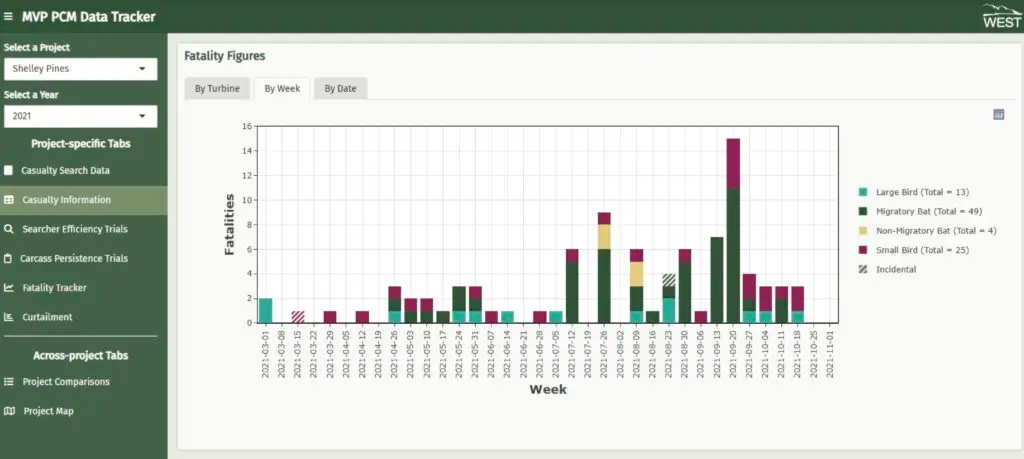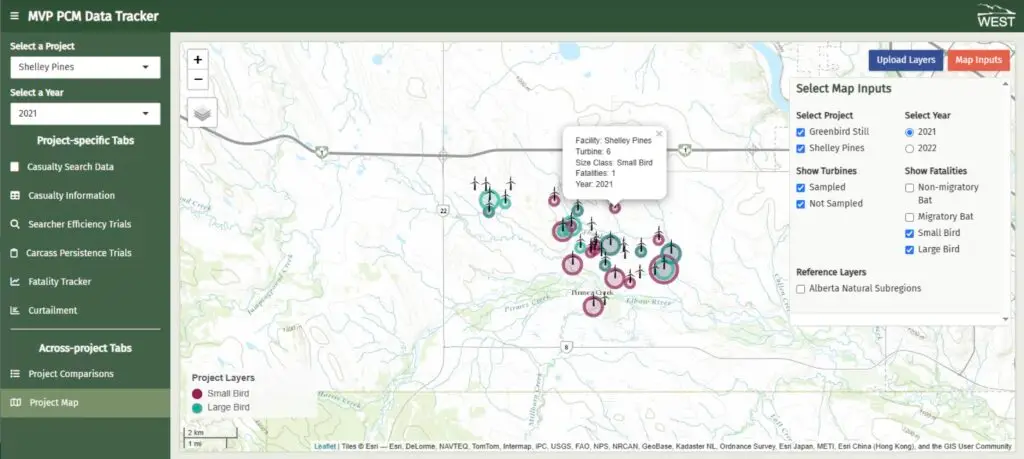Targeted Species Expertise: WEST’s Approach to Wildlife Conservation and Regulatory Support
Our Expertise

Bats
WEST has successfully executed hundreds of bat monitoring projects across North America. Our team specializes in acoustic monitoring, mist-netting surveys, hibernacula assessments, and conservation strategies that meet regulatory requirements.
Our expertise includes:
- Acoustic monitoring surveys and species identification
- Mist-netting and hibernacula surveys
- Telemetry studies
- Mine, cave, and bridge surveys
- Smart curtailment and deterrent studies
- North American Bat monitoring program
This work supports effective bat conservation and regulatory compliance—demonstrating WEST’s depth of experience in monitoring, habitat assessment, and species-specific strategies across North America.
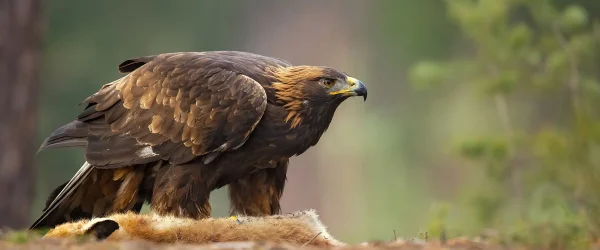
Eagles
With decades of experience in eagle ecology and regulatory compliance, WEST provides comprehensive research, risk assessments, and mitigation strategies to support eagle conservation efforts.
Our expertise includes:
- Eagle use and migration surveys
- Nest surveys (aerial and ground-based)
- Eagle conservation plans
- Impact avoidance and minimization strategies
- Fatality monitoring
- Bayesian Modeling for take estimation
- Eagle take permitting (general and specific permits)
- Compliance with US Fish and Wildlife Service eagle take permit conditions
This work advances eagle conservation and compliance—reflecting WEST’s extensive experience in eagle ecology, risk assessment, and permitting strategies.
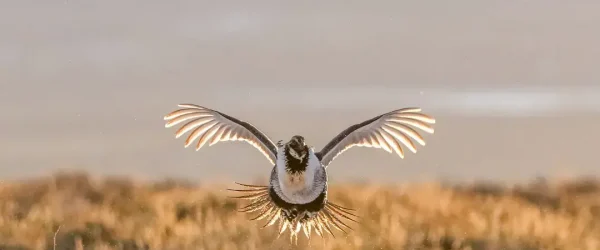
Grouse
WEST’s research is at the forefront of decision making related to grouse conservation, employing advanced telemetry, habitat modeling, and mitigation planning to support species like the lesser prairie-chicken and sage-grouse.
Our expertise includes:
- Population assessments and habitat mapping
- Telemetry and monitoring studies
- Identification of avoidance and minimization measures
- Adaptive management strategies
- Mitigation planning
This work informs grouse conservation and land-use planning—showcasing WEST’s leadership in telemetry, habitat modeling, and mitigation strategy development.
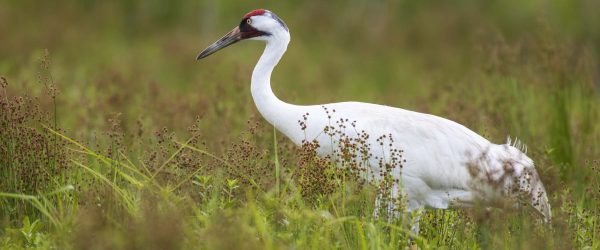
Whooping Cranes
As a federally listed endangered species, projects that might impact whooping cranes require precise, science-backed risk determination and conservation strategies. WEST supports clients with these needs by completing habitat evaluations, impact assessments, monitoring, minimization and mitigation planning, and compliance strategy.
Our expertise includes:
- Monitoring studies
- Habitat evaluations and conservation planning
- Impact assessments and mitigation measures
- Quantitative risk assessments for power lines
- Endangered Species Act compliance support
This work supports responsible development and species protection—demonstrating WEST’s expertise in whooping crane ecology, risk assessment, and Endangered Species Act compliance.
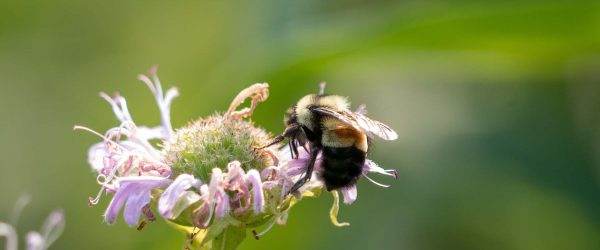
Insect Pollinators
With the increasing number of insect pollinator species listed or proposed for listing—including the rusty patched bumble bee, Dakota skipper, regal fritillary, monarch butterfly, and Suckley’s cuckoo bumble bee—WEST supports projects throughout the contiguous US through the development and implementation of science-based approaches to project vegetation and habitat management.
Our expertise includes:
- Insect pollinator and vegetation surveys
- Habitat evaluations and conservation planning
- Impact assessments and mitigation measures
- Endangered Species Act compliance support
- Monitoring project revegetation success and adaptive management
- Designing research studies to further our understanding of insect pollinator habitat and management needs
This work advances pollinator conservation and habitat management—highlighting WEST’s science-driven approach to vegetation surveys, impact assessment, and regulatory compliance.

Amphibians and Reptiles
WEST provides specialized expertise in amphibian and reptile surveys and studies focusing on habitat assessments, presence/probable absence surveys, and conservation planning.
Our expertise includes:
- Population monitoring and species surveys
- Habitat delineation and mapping
- Conservation strategy development
This work supports amphibian and reptile conservation—showcasing WEST’s specialized expertise in habitat assessment, species surveys, and strategic planning.
Representative Projects
Predicting Hoary Bat Fatalities Using Broad Regional Weather Fronts
Predictive Modeling Based on Existing Data
Outcome: WEST utilized eight years of existing post-construction monitoring survey data from 3 facilities in Indiana and Illinois, and showed that hoary bat fatalities could be accurately predicted based on the passage of regional weather systems. This resulted in additional funding to further test our modeling approach in Iowa. The results of the modeling can be used by our clients to improve smart curtailment over broader geographic regions.
- Iowa, Indiana, Illinois
- 2 Years
- Wind
Elkhorn Valley Wind Facility
Pre- and post-construction surveys, Eagle Conservation Plan development, and Eagle Incidental Take Permit compliance.
Outcome: For over two decades, WEST has been committed to delivering comprehensive eagle services to the Elkhorn Valley Wind Facility, including rigorous pre-construction and post-construction surveys (avian use surveys, eagle use surveys, raptor nest surveys, winter eagle surveys, bird/bat fatality monitoring, eagle telemetry study), Eagle Conservation Plan development (including a detailed risk assessment using telemetry data to quantify micro-siting benefits), and post-permit eagle fatality monitoring.
- Oregon
- 20+ Years
- Wind
Sweetwater Solar
Camera trap deployment and grouse fecal pellet surveys to monitor and assess the extent of grouse occurrence in and adjacent to a solar facility.
Outcome: Publication and potential continued research with Renewable Energy Wildlife Institute (REWI)
- Wyoming
- 1+ Years
- Solar
Discover WEST’s library of scientific publications and reports highlighting our work in environmental research, wildlife monitoring, renewable energy, and data-driven solutions.
Partner with WEST for Wildlife Research and Monitoring Services
Contact us to discuss your wildlife research and monitoring needs.

